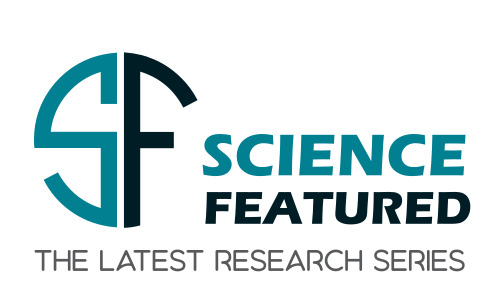Diabetic wounds, particularly foot ulcers, are among the most serious complications faced by patients with diabetes. These chronic wounds often fail to heal properly due to a combination of poor blood flow, persistent inflammation, and infection. The consequences can be severe, ranging from loss of mobility to amputations, and they place a substantial burden on healthcare systems worldwide. Against this backdrop, researchers have been seeking new treatments that can accelerate wound healing and improve patients’ quality of life.
Led by Dr. Nevena Puac at the University of Belgrade, a team of researchers demonstrated how plasma-activated water can enhance wound healing in diabetic rats. They showed the healing potential of water after plasma treatment, which could provide a more accessible option for patients. Their work is published in the International Journal of Molecular Sciences.
The research showed that plasma-activated water (PAW) treatment significantly improved wound closure in diabetic rats compared to untreated animals. Within the first days of healing, wounds treated with plasma-activated water displayed faster recovery and healthier tissue development. Notably, plasma-activated water did not change blood sugar levels, meaning the observed benefits were specific to the healing process itself. According to Dr. Puac and colleagues, “PAW improved wound healing in diabetic rats and mainly affected the inflammatory phase of wound healing”.
One of the central findings was that plasma-activated water reduced excessive inflammation, a key obstacle in diabetic wound repair. Tissue analysis revealed fewer inflammatory cells in plasma-activated water treated wounds, along with lower activity of enzymes linked to immune cells such as neutrophils, which are the first line of defense against infection, and macrophages, which are cells that clean debris and coordinate healing. These changes brought the healing process in diabetic rats closer to that seen in healthy controls. Dr. Puac explained, “Application of PAW decreased the number of inflammatory cells, myeloperoxidase myeloperoxidase and N-acetyl-b-D-glycosaminidase activity, and the expression of proinflammatory genes in diabetic rats”.
Beyond inflammation control, the treatment also enhanced tissue remodeling. Collagen, a structural protein vital for wound closure and strength, was deposited in greater amounts—roughly a tenth more—after plasma-activated water therapy. Importantly, this improvement was not due to increased collagen gene expression but rather to a favorable balance between enzymes that break down tissue and those that preserve the wound structure. This suggests plasma-activated water helps stabilize the wound environment, enabling more efficient healing.
Dr. Puac and her colleagues also shed light on how plasma-activated water influences molecular pathways. Levels of key inflammatory genes such as interleukin-1 beta, a molecule that signals inflammation, interleukin-6, another key regulator of the immune response, and tumor necrosis factor, a protein that promotes inflammation, were significantly lower in treated wounds. At the same time, the destructive enzyme matrix metalloproteinase-9, which breaks down connective tissue, was reduced, improving the balance between it and its natural inhibitor. This delicate shift likely explains why more collagen was preserved and integrated into healing tissue. Dr. Puac and the team concluded that plasma-activated water works through a dual mechanism: an early burst of inflammation to clear debris, followed by a rapid calming effect that allows wounds to progress to the proliferative phase, when new tissue forms, and the remodeling phase, when the wound structure strengthens.
In summary, the results suggest that plasma-activated water could offer a practical and effective new therapy for diabetic wounds. Unlike cold atmospheric plasma devices, which are bulky and require specialized equipment, plasma-activated water can be stored and easily applied as a liquid spray, making it more accessible for clinical use. Dr. Puac and her colleagues emphasized that while further studies and clinical trials are necessary, their findings lay the groundwork for developing improved strategies to treat chronic wounds in diabetic patients.
Journal Reference
Rajic J., Grdovic N., Markovic A., Skoro N., Dinic S., Uskokovic A., Arambasic Jovanovic J., Djordevic M., Saric A., Vidakovic M., Puac N., Mihailovic M. “Plasma-Activated Water Improve Wound Healing in Diabetic Rats by Influencing the Inflammatory and Remodelling Phase.” International Journal of Molecular Sciences, 2025; 26(3):1265. DOI: https://doi.org/10.3390/ijms26031265
About the Authors

Dr. Nevena Puač is a principal research fellow at the Institute of Physics Belgrade working in the low temperature plasma physics field – low and atmospheric pressure plasmas, expert in numerous diagnostics methods and application of plasmas in biology, medicine and agriculture. She obtained her PhD at the University of Belgrade with a part of the thesis completed at the Instituto Superior Tecnico, Lisbon, Portugal. She was a PI of national technological project (TD 23016, Ministry of Education, Science and Technological Development, 2008-2010), multidisciplinary project (III41011, Ministry of Education, Science and Technological Development, 2011-2019) and PI at several bilateral projects. Currently she is the Action Chair and coordinator of the multidisciplinary COST Action, PlAgri-CA19110, “Plasma Agriculture for smart and sustainable agriculture” and was a leader of Marie Sklodowska Curie ITN project (Nowelties 812880) at the Institute of Physics. She has published more than 80 articles in international journals and publications. Her h-index is 32 with more than 3000 citations. Most of the highly cited papers that she has published are in the field of plasma applications in biology and medicine. Until now she has supervised several PhD and Master and Diploma theses. She was co-chair and organizer of several conferences and workshops.

Dr. Nikola Skoro, principal research fellow, works at the Institute of Physics, University of Belgrade in the Centre for non-equilibrium processes. His research topics belong to the field of cold plasma diagnostics (spatially and temporally resolved plasma optical emission spectroscopy and ICCD imaging; power measurements) and applications of plasma in treatments of polymers and textiles in low-pressure plasmas and treatments of biomedical and liquid samples using atmospheric pressure plasmas – water decontamination and activation, treatment of medium and cells. He worked as a principal investigator in a proof-of-concept project and several projects of bilateral cooperation, and a work package leader at multidisciplinary project APPerTAin-BIOM (no. 7739780) financed by the Science Fund of the Republic of Serbia. He was a Marie Curie fellow and participated in several international and national projects as task leader. He has published more than 30 articles in international journals, his h-index is 14 with more than 350 citations. Most of the highly cited papers that he published belong to the field of plasma applications in biology, medicine and for treatment of liquid targets. He has given more than 15 invited lectures at renowned international conferences.

Andjelija Markovic, Research Assistant, employed at the Institute of Physics, working within the Center for Non-Equilibrium Processes. Her scientific research field focuses on low-temperature plasmas in contact with liquids. During her doctoral studies, she has conducted a wide range of diagnostics of plasma jets in contact with liquid systems, including power measurements, optical emission spectroscopy (OES), and ICCD imaging. She is also engaged in the application of plasma for liquid treatments (plasma-activated water, plasma-activated medium), which are further utilized in medicine and agriculture.
In her previous research on plasma system applications, she participated in the development and acquisition of intellectual property protections, such as patents, which provide recognition and potential financial benefits for the inventors and their affiliated institutions. She was a project leader within a SEED Research Grant under the SAIGE Project.
She has published two papers in international journals belong to the application of plasma-activated liquids in medicine and has participated in numerous conferences and scientific schools.













































